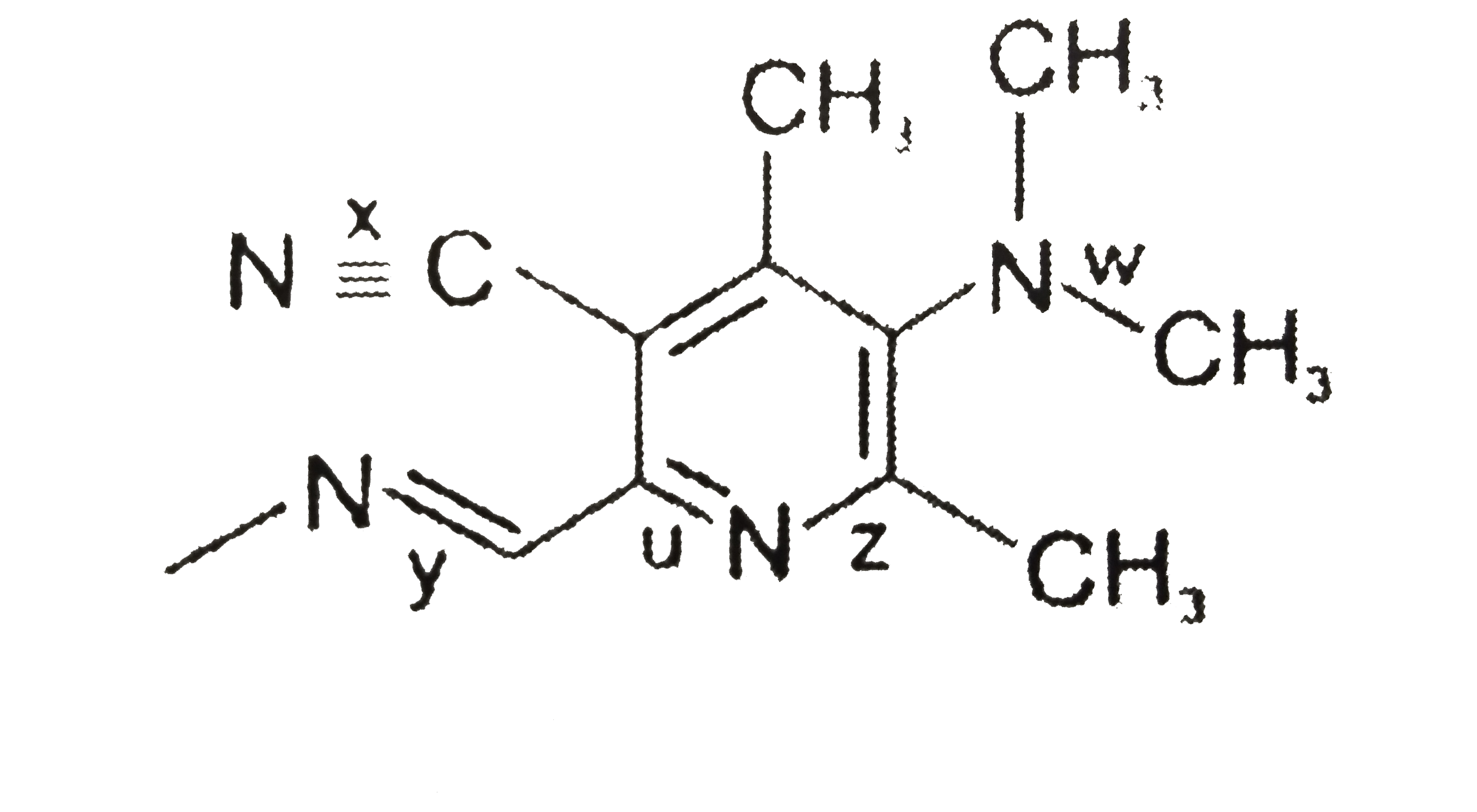What type of multiple bonds are involved in the compounds containing C ≡C, C≡ O and -C≡ N groups ?
To solve the question regarding the types of multiple bonds involved in the compounds containing C≡C, C≡O, and C≡N groups, we need to analyze each of these bonds step by step.
1. Understanding Multiple Bonds:
- Multiple bonds consist of sigma (σ) and pi (π) bonds. A sigma bond is formed by the head-on overlap of atomic orbitals, while pi bonds are formed by the side-to-side overlap of p-orbitals.
2. Analyzing C≡C (Carbon-Carbon Triple Bond):
- The carbon-carbon triple bond (C≡C) consists of:
- 1 Sigma Bond: This is the first bond formed between the two carbon atoms.
- 2 Pi Bonds: These are formed from the lateral overlap of the remaining p-orbitals of each carbon atom.
- Therefore, C≡C has 1 sigma bond and 2 pi bonds.
3. Analyzing C≡O (Carbon-Oxygen Triple Bond):
- The carbon-oxygen triple bond (C≡O) consists of:
- 1 Sigma Bond: This is the first bond formed between carbon and oxygen.
- 2 Pi Bonds: These are formed from the lateral overlap of the p-orbitals of carbon and oxygen.
- Thus, C≡O also has 1 sigma bond and 2 pi bonds.
4. Analyzing C≡N (Carbon-Nitrogen Triple Bond):
- The carbon-nitrogen triple bond (C≡N) consists of:
- 1 Sigma Bond: This is the first bond formed between carbon and nitrogen.
- 2 Pi Bonds: These are formed from the lateral overlap of the p-orbitals of carbon and nitrogen.
- Consequently, C≡N has 1 sigma bond and 2 pi bonds.
5. Summary of Findings:
- For all three types of bonds (C≡C, C≡O, and C≡N), we observe the same bonding pattern:
- 1 Sigma Bond and 2 Pi Bonds.
Final Answer:
- The compounds containing C≡C, C≡O, and C≡N groups involve 1 sigma bond and 2 pi bonds each.
- Multiple bonds consist of sigma (σ) and pi (π) bonds. A sigma bond is formed by the head-on overlap of atomic orbitals, while pi bonds are formed by the side-to-side overlap of p-orbitals.
- The carbon-carbon triple bond (C≡C) consists of:
- 1 Sigma Bond: This is the first bond formed between the two carbon atoms.
- 2 Pi Bonds: These are formed from the lateral overlap of the remaining p-orbitals of each carbon atom.
- Therefore, C≡C has 1 sigma bond and 2 pi bonds.
- The carbon-oxygen triple bond (C≡O) consists of:
- 1 Sigma Bond: This is the first bond formed between carbon and oxygen.
- 2 Pi Bonds: These are formed from the lateral overlap of the p-orbitals of carbon and oxygen.
- Thus, C≡O also has 1 sigma bond and 2 pi bonds.
- The carbon-nitrogen triple bond (C≡N) consists of:
- 1 Sigma Bond: This is the first bond formed between carbon and nitrogen.
- 2 Pi Bonds: These are formed from the lateral overlap of the p-orbitals of carbon and nitrogen.
- Consequently, C≡N has 1 sigma bond and 2 pi bonds.
- For all three types of bonds (C≡C, C≡O, and C≡N), we observe the same bonding pattern:
- 1 Sigma Bond and 2 Pi Bonds.
- The compounds containing C≡C, C≡O, and C≡N groups involve 1 sigma bond and 2 pi bonds each.
Topper's Solved these Questions
- BOOK - ICSECHAPTER - SOME P-BLOCK ELEMENTS EXERCISE - SHORT ANSWER TYPE QUESTIONS79videos
SOME P-BLOCK ELEMENTS
- BOOK - ICSECHAPTER - SOME P-BLOCK ELEMENTS EXERCISE - ESSAY (LONG ANSWER) TYPE QUESTION36videos
SOME P-BLOCK ELEMENTS
- BOOK - ICSECHAPTER - SOME P-BLOCK ELEMENTS EXERCISE - NCERT TEXTBOOK EXERCISES (With Hints and Solutions)63videos
SOME P-BLOCK ELEMENTS
- BOOK - ICSECHAPTER - SOME BASIC CONCEPTS OF CHEMISTRY EXERCISE - NCERT TEXT-BOOK EXERCISES (WITH HINGS AND SOLUTIONS)36videos
SOME BASIC CONCEPTS OF CHEMISTRY
- BOOK - ICSECHAPTER - STATES OF MATTER : GASES AND LIQUIDSEXERCISE - NCERT TEXT-BOOK EXERCISES (With Hints and Solutions)23videos
STATES OF MATTER : GASES AND LIQUIDS
Similar Questions
Knowledge Check
- Question 1 - Select One
The number of C-Csigma bonds in the compound
 A16B14C18D11
A16B14C18D11
What type of hybridisation is involved in the formation of the C−C bond?
View SolutionBy what type of reaction could a compound containing C, H and Cl – be obtained from ethyne?
View SolutionThe longest C−N bond length in the given compound is :
 View Solution
View SolutionThe valancy of carbons is generally 4, but its oxidation state may be −4,−2,0,+2,−1, etc. In the compounds containing C,H, and O, the oxidation number of C is calculated as
Oxidation number of C=2nO−nHnC
Where nO,nH and nC are the numbers of oxygen, hydrogen, and carbons, atoms, respectively.
In which of the following compounds is the oxidation state of C a fraction?View SolutionThe valancy of carbons is generally 4, but its oxidation state may be −4,−2,0,+2,−1, etc. In the compounds containing C,H, and O, the oxidation number of C is calculated as
Oxidation number of C=2nO−nHnC
Where nO,nH and nC are the numbers of oxygen, hydrogen, and carbons, atoms, respectively.
In which of the following compounds is the oxidation state of C highest?View SolutionThe valancy of carbons is generally 4, but its oxidation state may be −4,−2,0,+2,−1, etc. In the compounds containing C,H, and O, the oxidation number of C is calculated as
Oxidation number of C=2nO−nHnC
Where nO,nH and nC are the numbers of oxygen, hydrogen, and carbons, atoms, respectively.
In which of the following compounds is the valency of C two?View SolutionThe correct order of C−N bond lengths for the followin compounds is :
 View Solution
View Solution

